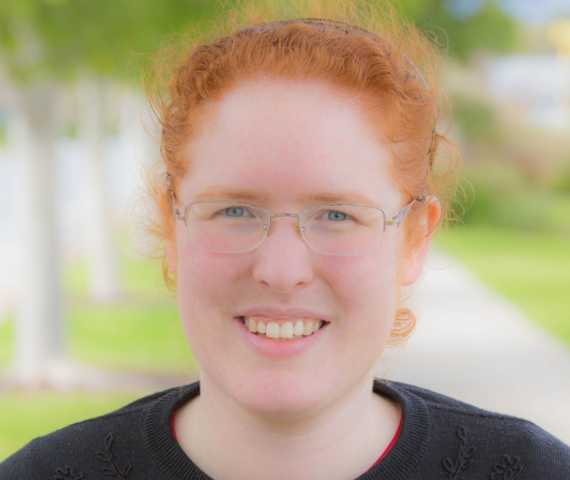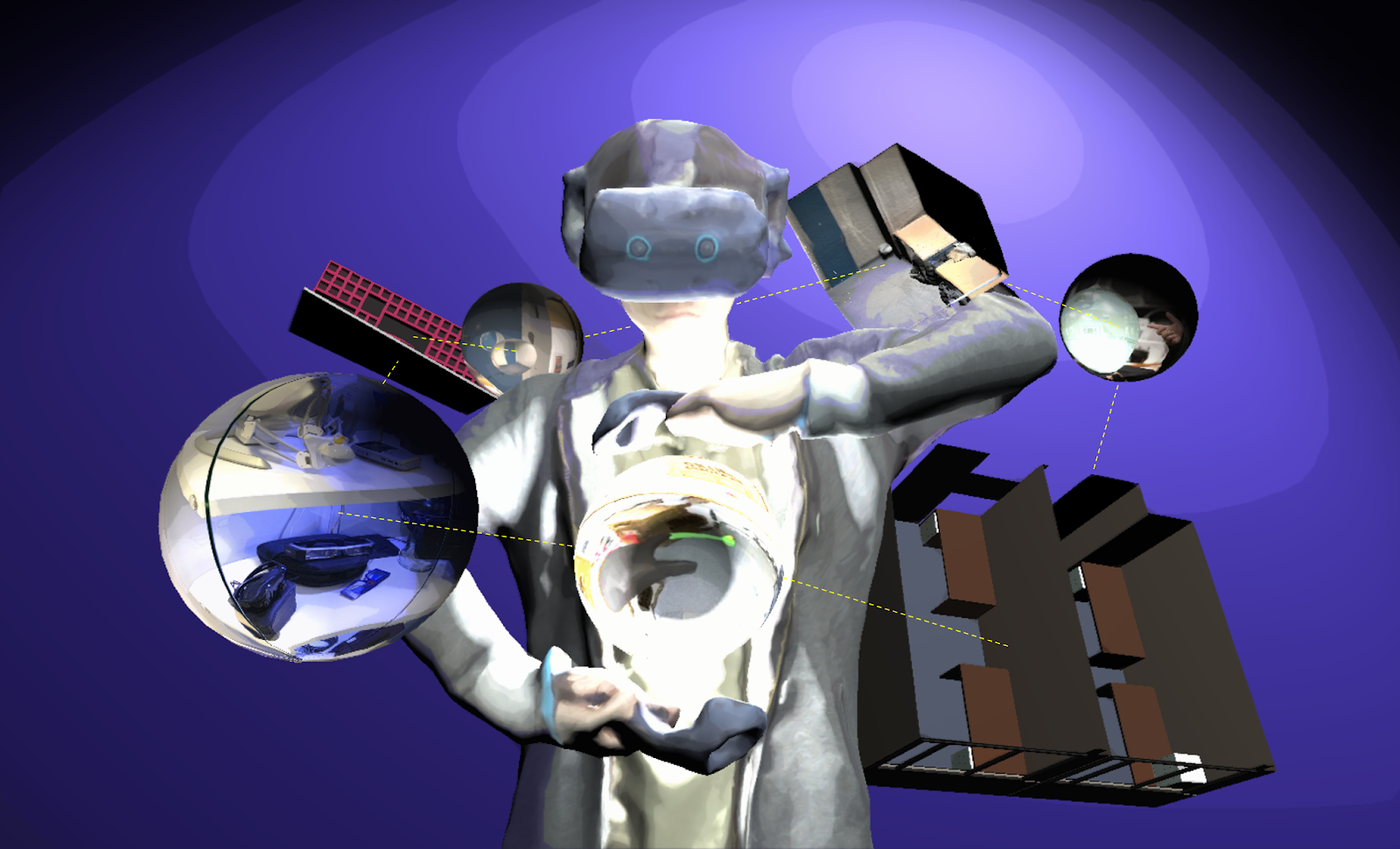Louise Lawrence
Louise Lawrence
PhD Student
Louise Lawrence is a PhD student, with interests in Augmented Reality (AR) and Virtual Reality (VR) and how they can be used to improve communication and collaboration. She graduated from the University of South Australia with a Bachelor of Computer Science (Honours). Her primary supervisor is Professor Mark Billinghurst.
Projects
-
Using 3D Spaces and 360 Video Content for Collaboration
This project explores techniques to enhance collaborative experience in Mixed Reality environments using 3D reconstructions, 360 videos and 2D images. Previous research has shown that 360 video can provide a high resolution immersive visual space for collaboration, but little spatial information. Conversely, 3D scanned environments can provide high quality spatial cues, but with poor visual resolution. This project combines both approaches, enabling users to switch between a 3D view or 360 video of a collaborative space. In this hybrid interface, users can pick the representation of space best suited to the needs of the collaborative task. The project seeks to provide design guidelines for collaboration systems to enable empathic collaboration by sharing visual cues and environments across time and space.
Publications
-
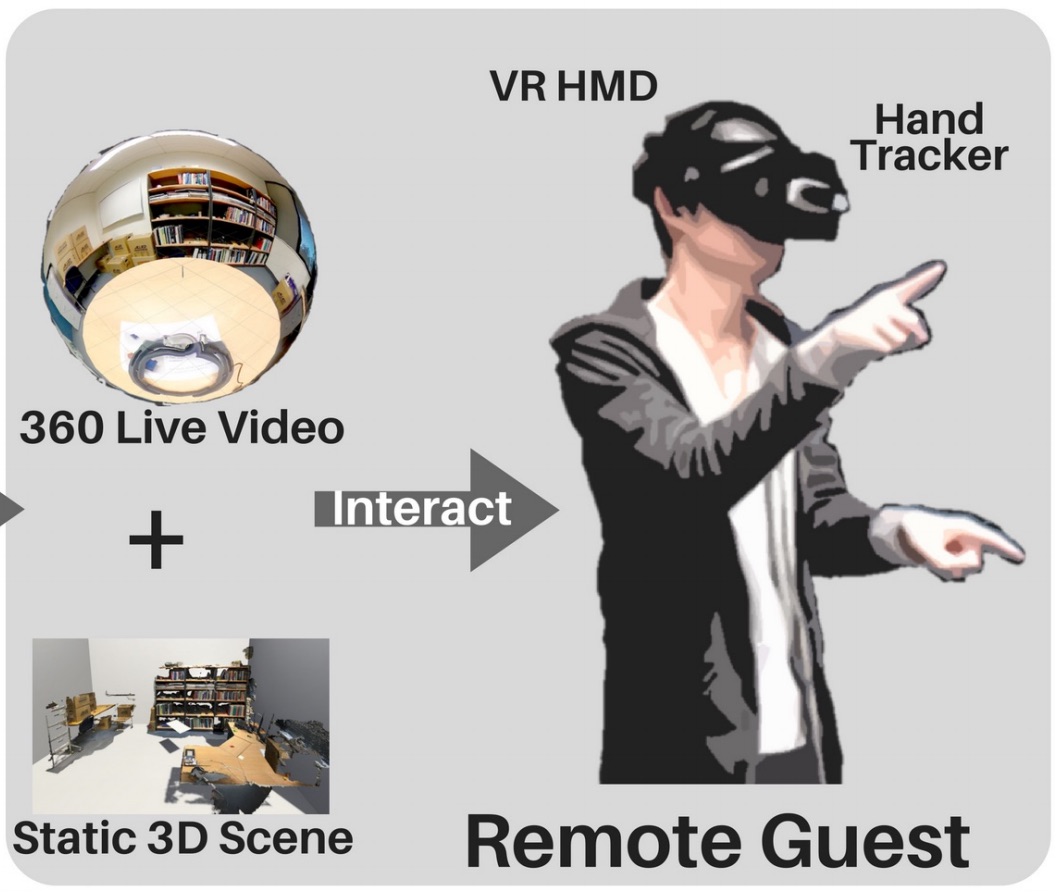
Mixed Reality Remote Collaboration Combining 360 Video and 3D Reconstruction
Teo, T., Lawrence, L., Lee, G. A., Billinghurst, M., & Adcock, M.Teo, T., Lawrence, L., Lee, G. A., Billinghurst, M., & Adcock, M. (2019, April). Mixed Reality Remote Collaboration Combining 360 Video and 3D Reconstruction. In Proceedings of the 2019 CHI Conference on Human Factors in Computing Systems (p. 201). ACM.
@inproceedings{teo2019mixed,
title={Mixed Reality Remote Collaboration Combining 360 Video and 3D Reconstruction},
author={Teo, Theophilus and Lawrence, Louise and Lee, Gun A and Billinghurst, Mark and Adcock, Matt},
booktitle={Proceedings of the 2019 CHI Conference on Human Factors in Computing Systems},
pages={201},
year={2019},
organization={ACM}
}Remote Collaboration using Virtual Reality (VR) and Augmented Reality (AR) has recently become a popular way for people from different places to work together. Local workers can collaborate with remote helpers by sharing 360-degree live video or 3D virtual reconstruction of their surroundings. However, each of these techniques has benefits and drawbacks. In this paper we explore mixing 360 video and 3D reconstruction together for remote collaboration, by preserving benefits of both systems while reducing drawbacks of each. We developed a hybrid prototype and conducted user study to compare benefits and problems of using 360 or 3D alone to clarify the needs for mixing the two, and also to evaluate the prototype system. We found participants performed significantly better on collaborative search tasks in 360 and felt higher social presence, yet 3D also showed potential to complement. Participant feedback collected after trying our hybrid system provided directions for improvement. -

Emotion Sharing and Augmentation in Cooperative Virtual Reality Games
Hart, J. D., Piumsomboon, T., Lawrence, L., Lee, G. A., Smith, R. T., & Billinghurst, M.Hart, J. D., Piumsomboon, T., Lawrence, L., Lee, G. A., Smith, R. T., & Billinghurst, M. (2018, October). Emotion Sharing and Augmentation in Cooperative Virtual Reality Games. In Proceedings of the 2018 Annual Symposium on Computer-Human Interaction in Play Companion Extended Abstracts (pp. 453-460). ACM.
@inproceedings{hart2018emotion,
title={Emotion Sharing and Augmentation in Cooperative Virtual Reality Games},
author={Hart, Jonathon D and Piumsomboon, Thammathip and Lawrence, Louise and Lee, Gun A and Smith, Ross T and Billinghurst, Mark},
booktitle={Proceedings of the 2018 Annual Symposium on Computer-Human Interaction in Play Companion Extended Abstracts},
pages={453--460},
year={2018},
organization={ACM}
}We present preliminary findings from sharing and augmenting facial expression in cooperative social Virtual Reality (VR) games. We implemented a prototype system for capturing and sharing facial expression between VR players through their avatar. We describe our current prototype system and how it could be assimilated into a system for enhancing social VR experience. Two social VR games were created for a preliminary user study. We discuss our findings from the user study, potential games for this system, and future directions for this research. -
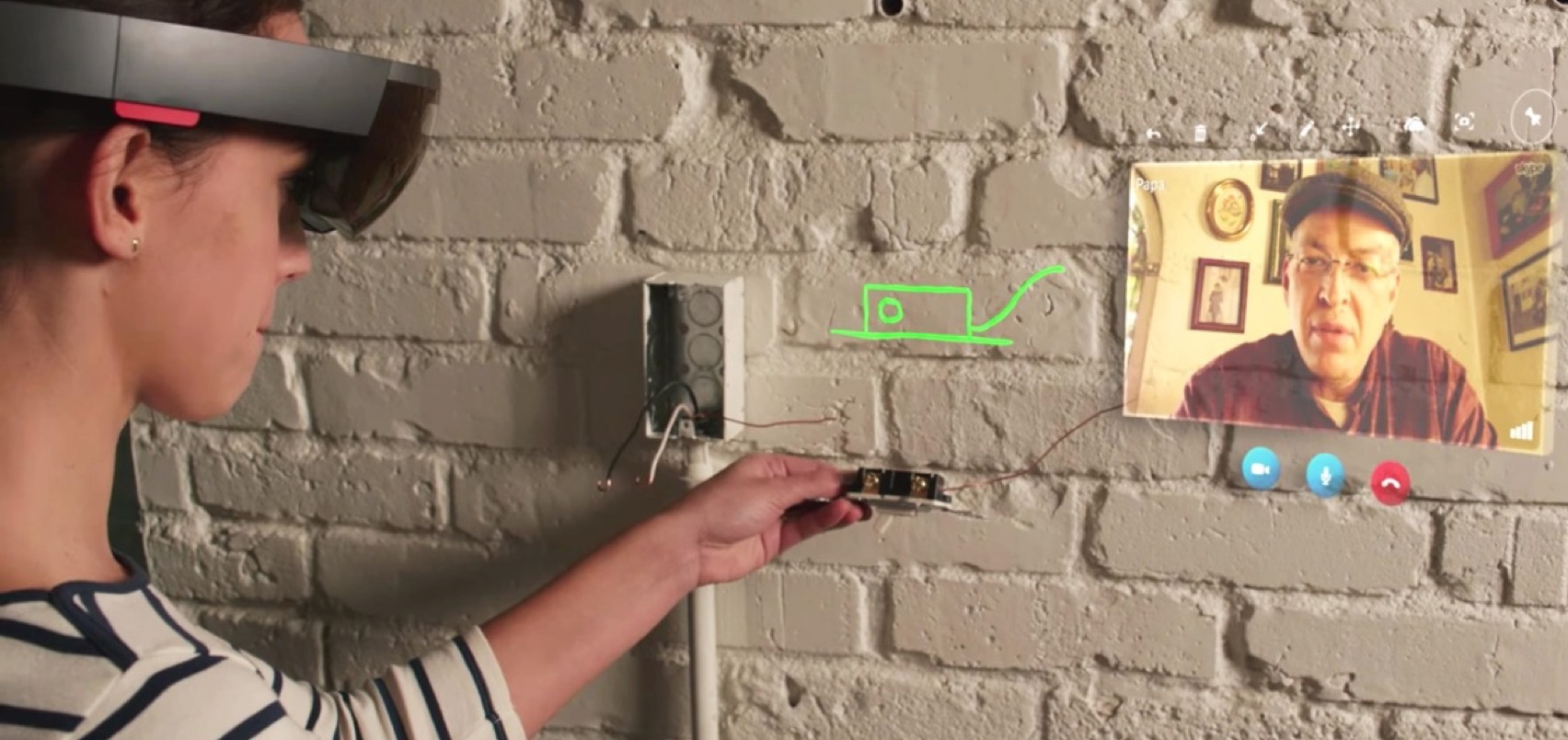
The effect of video placement in AR conferencing applications
Lawrence, L., Dey, A., & Billinghurst, M.Lawrence, L., Dey, A., & Billinghurst, M. (2018, December). The effect of video placement in AR conferencing applications. In Proceedings of the 30th Australian Conference on Computer-Human Interaction (pp. 453-457). ACM.
@inproceedings{lawrence2018effect,
title={The effect of video placement in AR conferencing applications},
author={Lawrence, Louise and Dey, Arindam and Billinghurst, Mark},
booktitle={Proceedings of the 30th Australian Conference on Computer-Human Interaction},
pages={453--457},
year={2018},
organization={ACM}
}We ran a pilot study to investigate the impact of video placement in augmented reality conferencing on communication, social presence and user preference. In addition, we explored the influence of different tasks, assembly and negotiation. We discovered a correlation between video placement and the type of the tasks, with some significant results in social presence indicators. -
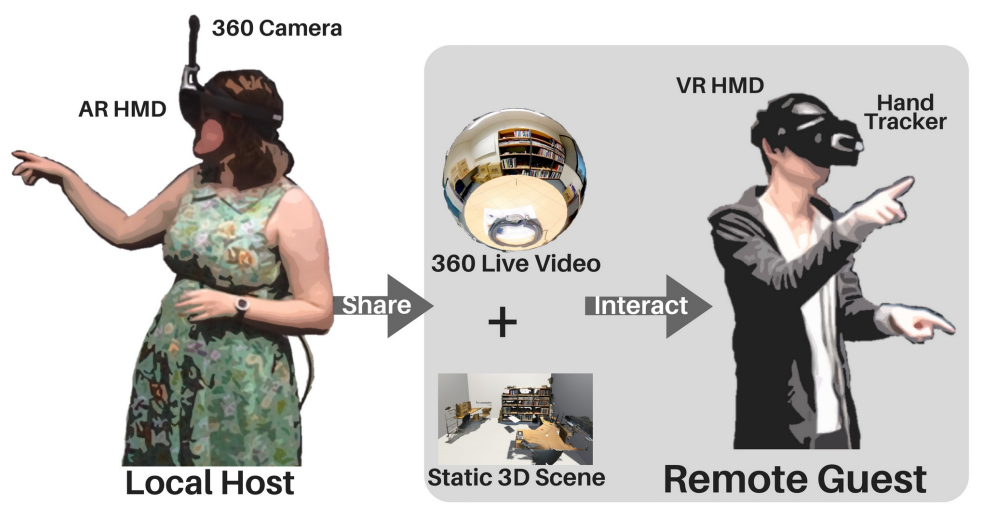
Mixed Reality Remote Collaboration Combining 360 Video and 3D Reconstruction
Theophilus Teo , Louise Lawrence , Gun A. Lee , Mark Billinghurst , Matt AdcockT. Teo, L. Lawrence, G. A. Lee, M. Billinghurst, and M. Adcock. (2019). “Mixed Reality Remote Collaboration Combining 360 Video and 3D Reconstruction”. In Proceedings of the 2019 CHI Conference on Human Factors in Computing Systems (CHI '19). ACM, New York, NY, USA, Paper 201, 14 pages.
@inproceedings{10.1145/3290605.3300431,
author = {Teo, Theophilus and Lawrence, Louise and Lee, Gun A. and Billinghurst, Mark and Adcock, Matt},
title = {Mixed Reality Remote Collaboration Combining 360 Video and 3D Reconstruction},
year = {2019},
isbn = {9781450359702},
publisher = {Association for Computing Machinery},
address = {New York, NY, USA},
url = {https://doi.org/10.1145/3290605.3300431},
doi = {10.1145/3290605.3300431},
abstract = {Remote Collaboration using Virtual Reality (VR) and Augmented Reality (AR) has recently become a popular way for people from different places to work together. Local workers can collaborate with remote helpers by sharing 360-degree live video or 3D virtual reconstruction of their surroundings. However, each of these techniques has benefits and drawbacks. In this paper we explore mixing 360 video and 3D reconstruction together for remote collaboration, by preserving benefits of both systems while reducing drawbacks of each. We developed a hybrid prototype and conducted user study to compare benefits and problems of using 360 or 3D alone to clarify the needs for mixing the two, and also to evaluate the prototype system. We found participants performed significantly better on collaborative search tasks in 360 and felt higher social presence, yet 3D also showed potential to complement. Participant feedback collected after trying our hybrid system provided directions for improvement.},
booktitle = {Proceedings of the 2019 CHI Conference on Human Factors in Computing Systems},
pages = {1–14},
numpages = {14},
keywords = {interaction methods, remote collaboration, 3d scene reconstruction, mixed reality, virtual reality, 360 panorama},
location = {Glasgow, Scotland Uk},
series = {CHI '19}
}Remote Collaboration using Virtual Reality (VR) and Augmented Reality (AR) has recently become a popular way for people from different places to work together. Local workers can collaborate with remote helpers by sharing 360-degree live video or 3D virtual reconstruction of their surroundings. However, each of these techniques has benefits and drawbacks. In this paper we explore mixing 360 video and 3D reconstruction together for remote collaboration, by preserving benefits of both systems while reducing drawbacks of each. We developed a hybrid prototype and conducted user study to compare benefits and problems of using 360 or 3D alone to clarify the needs for mixing the two, and also to evaluate the prototype system. We found participants performed significantly better on collaborative search tasks in 360 and felt higher social presence, yet 3D also showed potential to complement. Participant feedback collected after trying our hybrid system provided directions for improvement.

